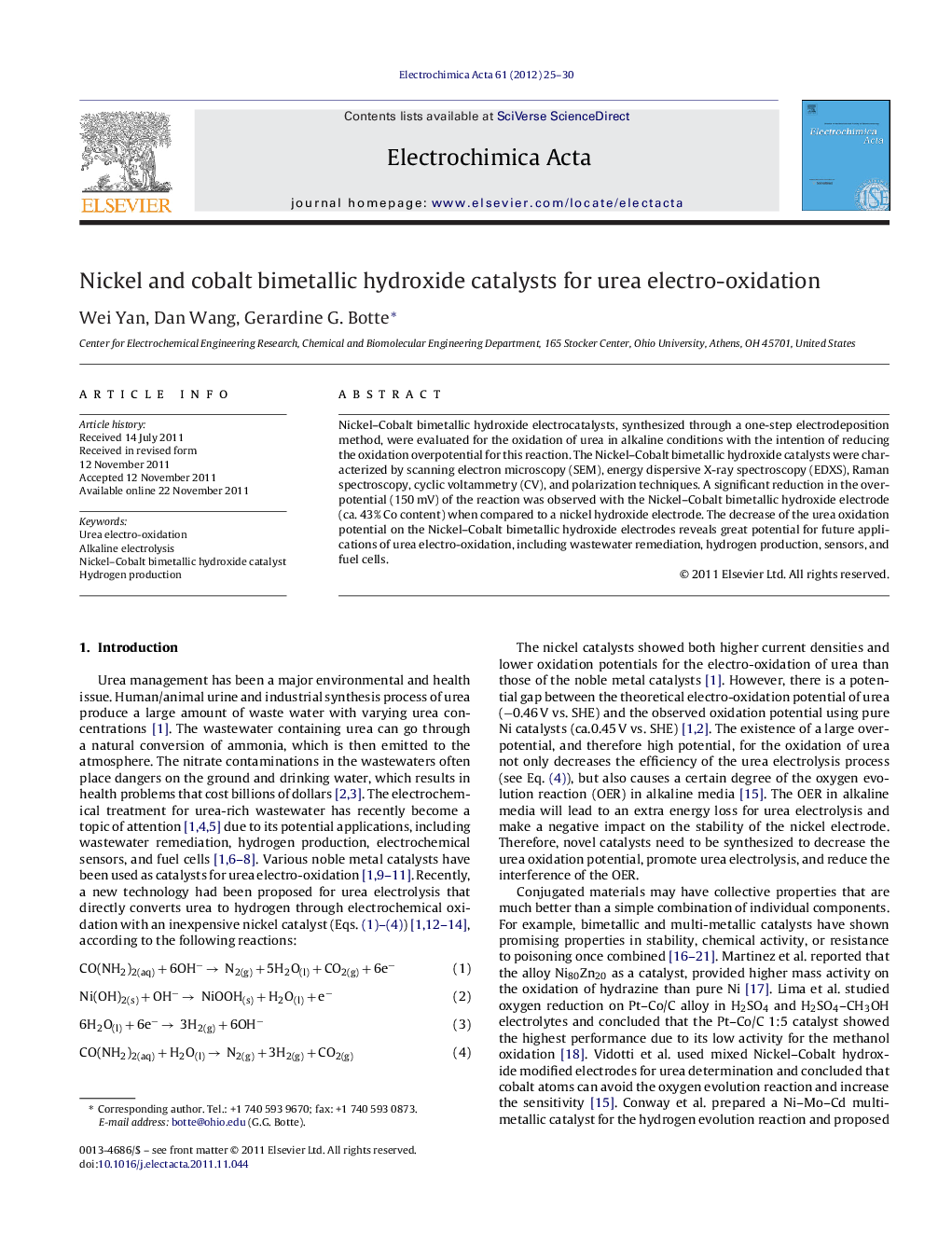| Article ID | Journal | Published Year | Pages | File Type |
|---|---|---|---|---|
| 188919 | Electrochimica Acta | 2012 | 6 Pages |
Nickel–Cobalt bimetallic hydroxide electrocatalysts, synthesized through a one-step electrodeposition method, were evaluated for the oxidation of urea in alkaline conditions with the intention of reducing the oxidation overpotential for this reaction. The Nickel–Cobalt bimetallic hydroxide catalysts were characterized by scanning electron microscopy (SEM), energy dispersive X-ray spectroscopy (EDXS), Raman spectroscopy, cyclic voltammetry (CV), and polarization techniques. A significant reduction in the overpotential (150 mV) of the reaction was observed with the Nickel–Cobalt bimetallic hydroxide electrode (ca. 43% Co content) when compared to a nickel hydroxide electrode. The decrease of the urea oxidation potential on the Nickel–Cobalt bimetallic hydroxide electrodes reveals great potential for future applications of urea electro-oxidation, including wastewater remediation, hydrogen production, sensors, and fuel cells.
